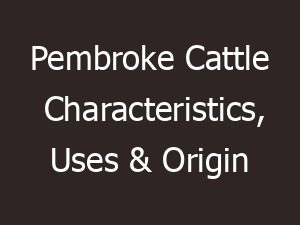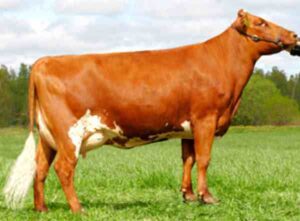The Tswana cattle breed is a Sanga type of cattle, similar to Barotse and Tuli. It is an indigenous cattle breed of Botswana, and mainly raised for meat production.
The breed is also known by some other names such as Bechuana, BataWana, Mangwato, Sechuana, Setswana, Seshaga and Sengologa. The Tswana people brought these cattle into the area.
The Tswana people settled in the Ngami region of Botswana early in the 19th century. The Tswana cattle eventually displaced practically all of the cattle native to the region.
They are well adapted to hot and dry environments, and can also be found in South Africa. Read more information about this cattle breed below.
Tswana Cattle Characteristics
These animals are relatively smaller in size with well built body, showing good fleshing. They are usually plain black in color or multi colored (red pied and rarely black pied).
They usually have long horns and their legs are moderately long. The Tswana bulls on average weight about 480 kg, and average body weight of the cows is about 360 kg. Info from ansi.okstate.edu and Wikipedia.
Uses
These animals have well built body showing good fleshing. They are mainly used for meat production.
Special Notes
The Tswana cattle are very hardy animals. They are well adapted to dry and hot environments. And they have a high level of tick and heat tolerance.
In case of quality, these cattle produce good quality beef. Review full breed profile of this cattle breed in the table below.
| Breed Name | Tswana |
| Other Name | Bechuana, BataWana, Mangwato, Sechuana, Setswana, Seshaga and Sengologa |
| Breed Purpose | Meat |
| Special Notes | Hardy, well adapted to hot and dry environments |
| Breed Size | Small to Medium |
| Bulls | About 480 kg |
| Cows | About 360 kg |
| Climate Tolerance | All Climates |
| Coat Color | Plain black or multi colored |
| Horned | Yes |
| Milk Yield | Poor |
| Rarity | Common |
| Country/Place of Origin | Botswana |






